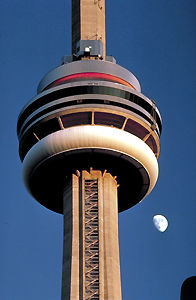Browse "Buildings & Monuments"
-
Article
Chateau Lake Louise
Chateau Lake Louise is a world-renowned mountain resort and UNESCO World Heritage Site located in Banff National Park, Alberta. Known as the “Diamond in the Wilderness,” the chateau was built beginning in the late 1800s, and was developed as part of the CPR’s network of hotels. It shares a lineage with the Banff Springs Hotel, Le Chateau Frontenac in Québec City and the Empress Hotel in Victoria. Considering its remote location and its eventual scale, the Chateau Lake Louise marked an important point in the development of the Canadian West.
"https://d2ttikhf7xbzbs.cloudfront.net/media/media/fd1b73ac-b324-4388-a19b-a3de2c9da995.jpg" // resources/views/front/categories/view.blade.php
https://d2ttikhf7xbzbs.cloudfront.net/media/media/fd1b73ac-b324-4388-a19b-a3de2c9da995.jpg
-
Article
Christ Church Cathedral
Christ Church Cathedral, Fredericton, was built 1845-53 to the neo-Gothic plans of British architects Frank Wills and William Butterfield.
"https://d2ttikhf7xbzbs.cloudfront.net/media/media/4f1b3d1b-f5d2-4690-8729-6fb54972c381.jpg" // resources/views/front/categories/view.blade.php
https://d2ttikhf7xbzbs.cloudfront.net/media/media/4f1b3d1b-f5d2-4690-8729-6fb54972c381.jpg
-
Article
CN Tower
The CN Tower, Toronto, was the world's tallest free-standing structure until 2007, when the Burj Khalifa in Dubai, United Arab Emirates, surpassed it.
"https://d2ttikhf7xbzbs.cloudfront.net/media/media/59fe8f1d-94ba-48ec-a0f9-62f9e97653e4.jpg" // resources/views/front/categories/view.blade.php
https://d2ttikhf7xbzbs.cloudfront.net/media/media/59fe8f1d-94ba-48ec-a0f9-62f9e97653e4.jpg
-
Article
Condominium
Owners in a condominium project are responsible for all expenses relating to their own individual unit, but in addition the condominium owners must pay their share of the expenses relating to the common areas.
"https://d2ttikhf7xbzbs.cloudfront.net/media/media/0f0cb5c6-72a1-44ab-93be-c5bf3c959f89.jpg" // resources/views/front/categories/view.blade.php
https://d2ttikhf7xbzbs.cloudfront.net/media/media/0f0cb5c6-72a1-44ab-93be-c5bf3c959f89.jpg
-
Macleans
D-Day Vet's Memorial Centre Opens
GARTH WEBB recounts his fundraising odyssey with bemused fascination, as if luck had everything to do with it. But the story of how the D-Day vet generated $10 million to create a memorial and education centre celebrating Canada's contribution to the SECOND WORLD WAR belies his manner.This article was originally published in Maclean's Magazine on May 26, 2003
"https://development.thecanadianencyclopedia.ca/images/tce_placeholder.jpg?v=e9dca980c9bdb3aa11e832e7ea94f5d9" // resources/views/front/categories/view.blade.php
https://development.thecanadianencyclopedia.ca/images/tce_placeholder.jpg?v=e9dca980c9bdb3aa11e832e7ea94f5d9
-
"https://development.thecanadianencyclopedia.ca/images/tce_placeholder.jpg?v=e9dca980c9bdb3aa11e832e7ea94f5d9" // resources/views/front/categories/view.blade.php
https://development.thecanadianencyclopedia.ca/images/tce_placeholder.jpg?v=e9dca980c9bdb3aa11e832e7ea94f5d9
-
Article
Earnscliffe
Earnscliffe, built in 1857 for Thomas MacKinnon, a successful businessman, was one of Ottawa's most impressive mansions of the mid-19th century.
"https://development.thecanadianencyclopedia.ca/images/tce_placeholder.jpg?v=e9dca980c9bdb3aa11e832e7ea94f5d9" // resources/views/front/categories/view.blade.php
https://development.thecanadianencyclopedia.ca/images/tce_placeholder.jpg?v=e9dca980c9bdb3aa11e832e7ea94f5d9
-
Article
Eaton Centre
The Eaton Centre, Toronto (designed by the Zeidler Partnership and Bregman and Hamann, phase 1 opening in 1977, phase 2 in 1979) is the epitome of those vast multistorey interior "atrium" spaces for which Canadian architecture became known internationally in the 1970s. The centre comprises The T.
"https://d2ttikhf7xbzbs.cloudfront.net/media/media/bd088120-a159-437f-adc3-befdf7f43e50.jpg" // resources/views/front/categories/view.blade.php
https://d2ttikhf7xbzbs.cloudfront.net/media/media/bd088120-a159-437f-adc3-befdf7f43e50.jpg
-
Article
Empress Hotel
The Empress Hotel is a luxury waterfront hotel and national historic site in Victoria, British Columbia. Designed primarily by architect Francis M. Rattenbury, it is noted for its picturesque Château-style design and decadent interiors. It opened in 1908 and was built by the Canadian Pacific Railway (CPR) as part of its network of hotels, which also includes the Banff Springs Hotel, Chateau Lake Louise and Le Château Frontenac. Now officially known as the Fairmont Empress, the hotel, along with its afternoon tea, is arguably Victoria’s most popular tourist attraction.
"https://d2ttikhf7xbzbs.cloudfront.net/media/media/abc93a47-6ec2-4030-8d75-17b7d6b2f2dc.jpg" // resources/views/front/categories/view.blade.php
https://d2ttikhf7xbzbs.cloudfront.net/media/media/abc93a47-6ec2-4030-8d75-17b7d6b2f2dc.jpg
-
Macleans
Farewell to Montreal Forum
This article was originally published in Maclean’s magazine on March 18, 1996. Partner content is not updated. Yvon Lambert cherishes the memory of it still, the magic moment when he briefly wore the crown. Like so many Montreal fables, it is a story about hockey. And like most hockey stories in the city, it happened at the Forum, on a warm evening in May 17 years ago.
"https://development.thecanadianencyclopedia.ca/images/tce_placeholder.jpg?v=e9dca980c9bdb3aa11e832e7ea94f5d9" // resources/views/front/categories/view.blade.php
https://development.thecanadianencyclopedia.ca/images/tce_placeholder.jpg?v=e9dca980c9bdb3aa11e832e7ea94f5d9
-
Article
Father Lacombe Chapel
Father Lacombe Chapel, located in St. Albert, is generally considered to be the oldest surviving building in Alberta. The chapel was built in 1861 by Father Albert Lacombe, an Oblate of Mary Immaculate missionary. In the early 1860s Father Lacombe became concerned with the future of the Métis.
"https://development.thecanadianencyclopedia.ca/images/tce_placeholder.jpg?v=e9dca980c9bdb3aa11e832e7ea94f5d9" // resources/views/front/categories/view.blade.php
https://development.thecanadianencyclopedia.ca/images/tce_placeholder.jpg?v=e9dca980c9bdb3aa11e832e7ea94f5d9
-
Editorial
The Parliament Hill Fire of 1916
The following article is an editorial written by The Canadian Encyclopedia staff. Editorials are not usually updated.
"https://development.thecanadianencyclopedia.ca/images/tce_placeholder.jpg?v=e9dca980c9bdb3aa11e832e7ea94f5d9" // resources/views/front/categories/view.blade.php
https://development.thecanadianencyclopedia.ca/images/tce_placeholder.jpg?v=e9dca980c9bdb3aa11e832e7ea94f5d9
-
Article
Fort Amherst
Fort Amherst, on the west shore of Charlottetown Harbour, Prince Edward Island, was built in late 1758 by the British. The site was known previously as Port La Joie, established in 1720 as the capital of the French colony of Île Saint-Jean.
"https://development.thecanadianencyclopedia.ca/images/tce_placeholder.jpg?v=e9dca980c9bdb3aa11e832e7ea94f5d9" // resources/views/front/categories/view.blade.php
https://development.thecanadianencyclopedia.ca/images/tce_placeholder.jpg?v=e9dca980c9bdb3aa11e832e7ea94f5d9
-
Article
Fortification
Although the barrier posed by these walls was sometimes increased by setting a ditch below their outer faces, fortification did not progress beyond this rather simple conception until the 16th century.
"https://d2ttikhf7xbzbs.cloudfront.net/media/media/528fc0db-255d-4206-bfde-3fcb0b932747.jpg" // resources/views/front/categories/view.blade.php
https://d2ttikhf7xbzbs.cloudfront.net/media/media/528fc0db-255d-4206-bfde-3fcb0b932747.jpg
-
Article
Forum
Forum. Montreal arena, home of the famous hockey team the Canadiens, and the site of many sporting, musical, and stage events. Situated at the corner of Atwater and Ste-Catherine streets, it is the property of the Canadian Arena Co.
"https://development.thecanadianencyclopedia.ca/images/tce_placeholder.jpg?v=e9dca980c9bdb3aa11e832e7ea94f5d9" // resources/views/front/categories/view.blade.php
https://development.thecanadianencyclopedia.ca/images/tce_placeholder.jpg?v=e9dca980c9bdb3aa11e832e7ea94f5d9
